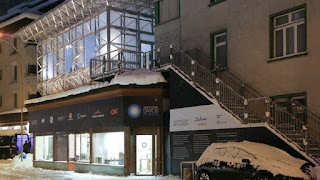ICEhouse designed for continuous reuse and quick construction
The walls and roof of William McDonough's ICEhouse were assembled in just a few days and the whole structure in just nine days. And where conventional houses typically create a lot of waste when they come to the end of their lives, this home was designed to eliminate waste and for its materials to be reusable.
Designed by William McDonough + Partners Architects and built using McDonough's WonderFrame system. "We are calling it 'wonder' because we want people to wonder what it's made of, and 'frame' because it is meant to be whatever structure each community and culture may need, and constructed from whatever materials they have available in that place at that time," explains McDonough.
Designed by William McDonough + Partners Architects and built using McDonough's WonderFrame system. "We are calling it 'wonder' because we want people to wonder what it's made of, and 'frame' because it is meant to be whatever structure each community and culture may need, and constructed from whatever materials they have available in that place at that time," explains McDonough.
The ICEhouse was recently on display in Davos, Switzerland, as part of the World Economic Forum. "ICEhouse is a structure designed for disassembly and reconstruction," says McDonough. "In a poetic sense, like ice, it is ephemeral: It is here for a week, in the Alps. Next week it will melt away… destined to reappear elsewhere."
The ICEhouse nomenclature stands for "Innovation for the Circular Economy house." A circular economy is one that seeks to continually reuse and recycle materials rather than simply disposing of them after use. McDonough speaks of designing with this in mind, using what he calls a "cradle-to-cradle" approach.
The building was designed to demonstrate this very approach and is primarily made of just four materials. It has an aluminum frame, although research is being carried out into what other materials could be used for the frame, such as plastics and bamboo.
Elsewhere, polycarbonate is used for the walls and roofing, aerogel for insulation and Nylon 6 for other aspects of the construction. All of these materials are said to be eitherCradle to Cradle-certified or in the process of becoming certified. This means that they can be remanufactured into new products with no loss in material quality.
In addition, the ICEhouse employs what William McDonough + Partners calls "a simple, flexible structural system that can be erected quickly and that is made of locally available materials." The use of materials that can be sourced locally in any given location contributes to the speed with which the ICEhouse can be constructed.
Following its time being exhibited at the World Economic Forum, the ICEhouse is to be relocated to the new National Hub for the Circular Economy in Amsterdam, Netherlands.
Categories: news











0 comments:
Post a Comment